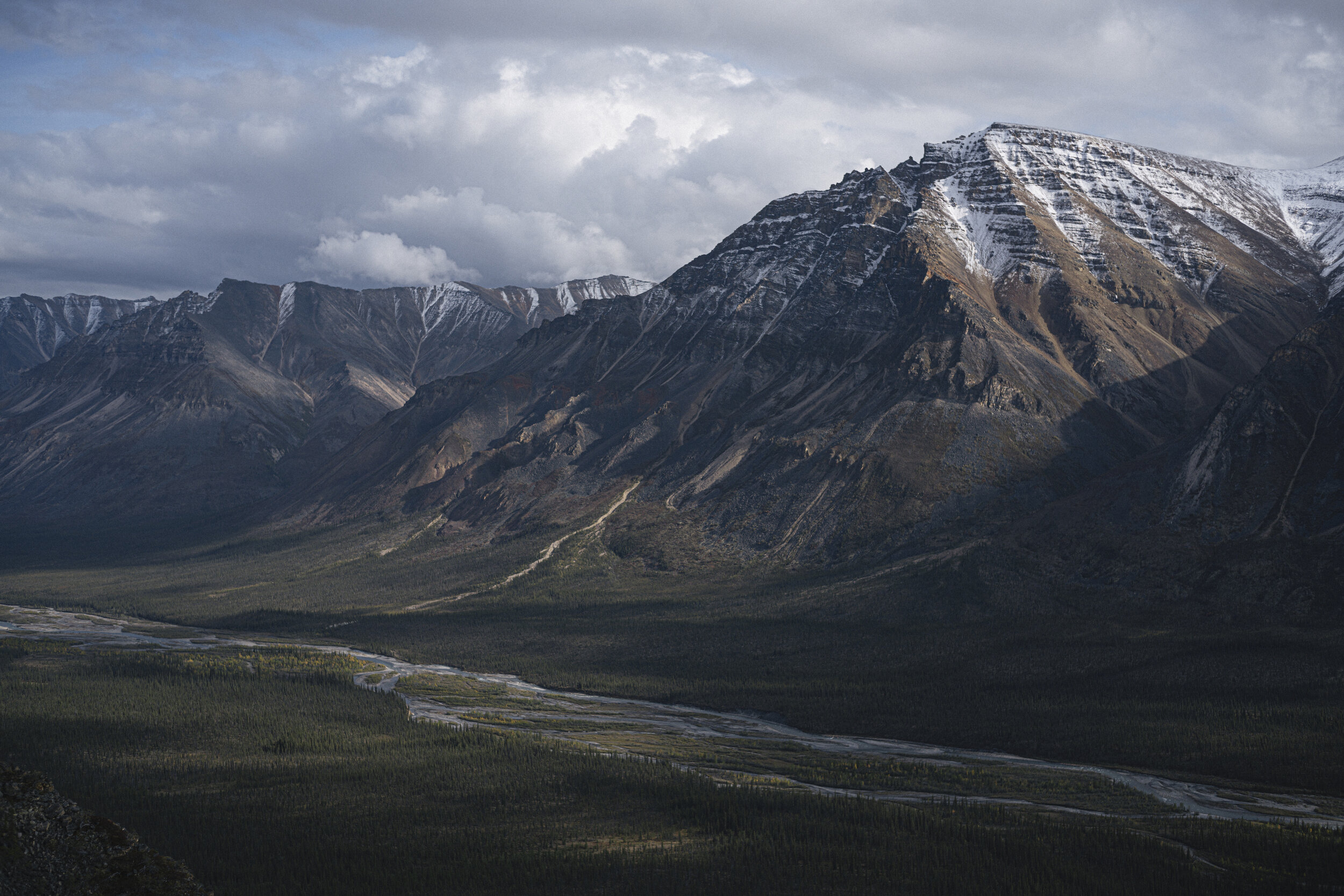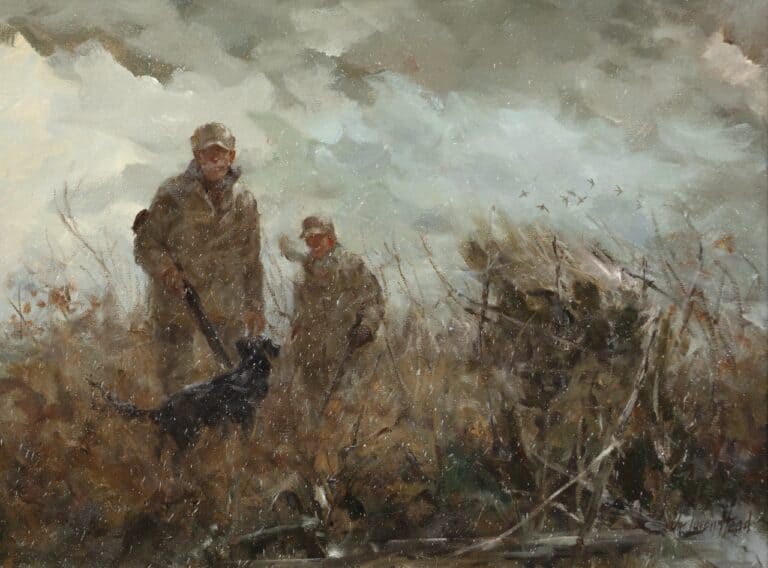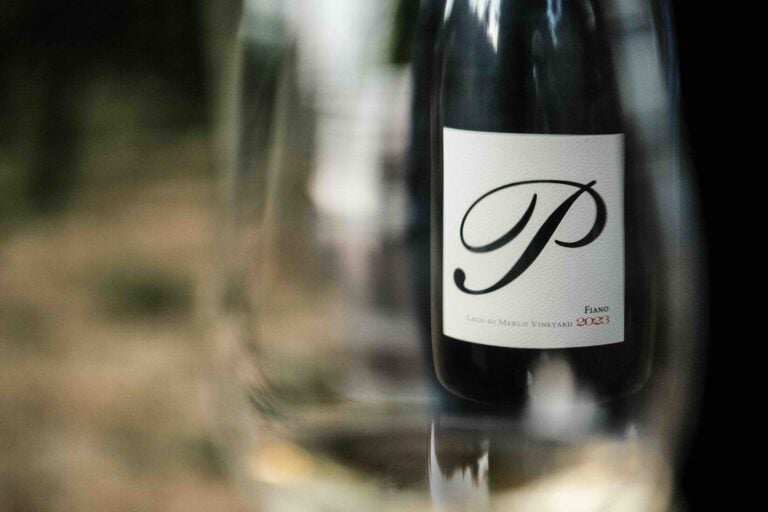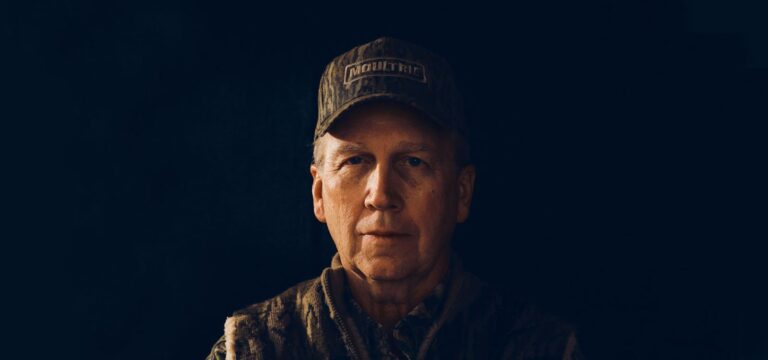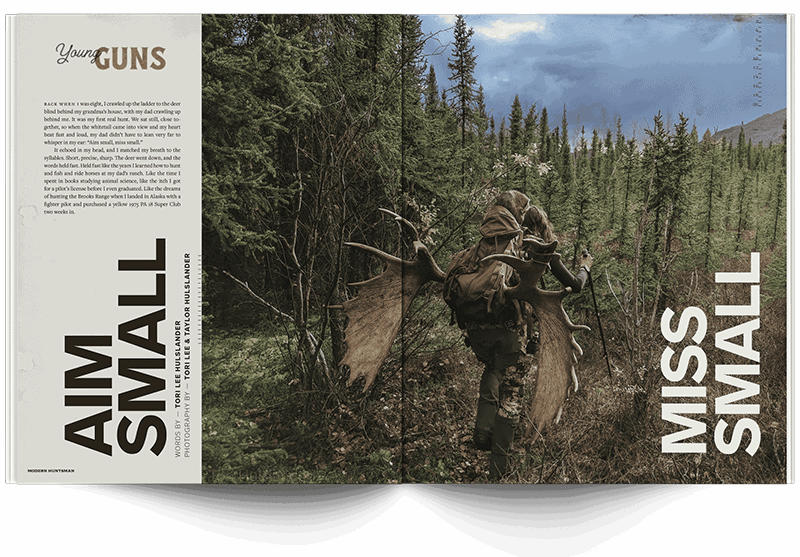Watch the film Annuli to see this full story in action. Watch the film
DAY 1: AUGUST 23, 2019
BRIDGET: I am in the Northwest Territories, in a wall tent, and I am hunting Dall sheep in the morning. I feel calm knowing that I’m focused and there is one task at hand. But I can’t ignore the anxiety over not knowing what the days ahead will bring.
We wake at Palmer Lake early to saddle up, pack 17 horses and depart from base camp. There’s nervous energy in the air, filled with the anticipation of leaving civilization behind to spend two weeks in the middle of nowhere. Our simple, but intimidating pursuit is this: find both a mature Dall sheep ram and a mountain caribou bull.Our guide, Dane, leads the pack-string, with Jess and me riding behind. No lead ropes are necessary for the pack horses — they roam freely around us and keep up with the group. I ride a beautiful white half-draft that behaves perfectly for the novice rider that I am. It’s clear that this isn’t his first time. The river-flats turn into steep, rocky slopes, with the Mackenzie Mountains towering over us on either side. Jess comments, “What a quaint idea of wilderness we have in America.” She’s right. We spot a caribou cow and a calf near the bank of the Fritz River, whose cold flowing waters would eventually wind their way to our camp. The animals surprise me by moving toward us, clearly inquisitive. We keep riding so as not to bother them.
After arriving at the first camp, we set up our wall tent before riding back to the river-flats to await the Super Cub. The small plane would fly from the base camp we left earlier to drop grain for the horses and other supplies for us. Glassing from the riverbank through my binoculars, I spot a blonde grizzly bear walking parallel about 200 yards away. As I raise my binos to get a closer look at his face, he
